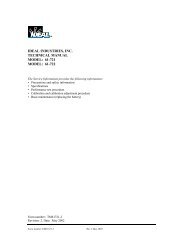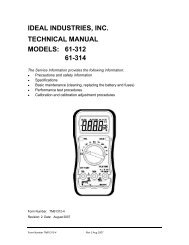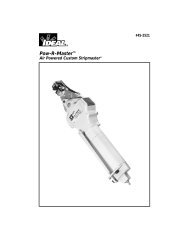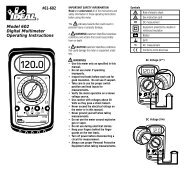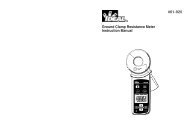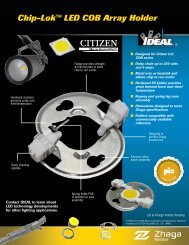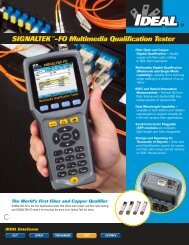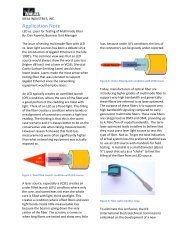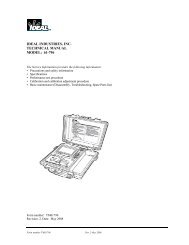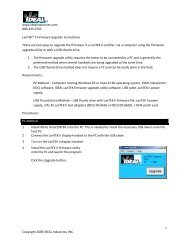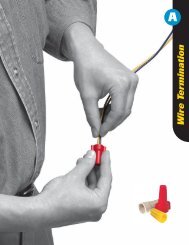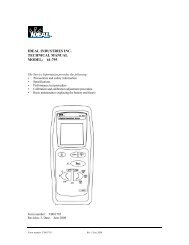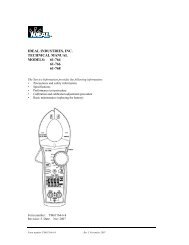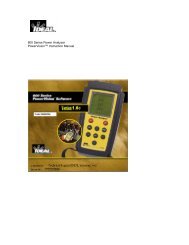LanTEK® II Series Manual - Ideal Industries Inc.
LanTEK® II Series Manual - Ideal Industries Inc.
LanTEK® II Series Manual - Ideal Industries Inc.
You also want an ePaper? Increase the reach of your titles
YUMPU automatically turns print PDFs into web optimized ePapers that Google loves.
CHAPTER 7<br />
Coaxial Cable Test<br />
7.1. PROPERTIES OF COAXIAL CABLES<br />
The coaxial cable offers numerous benefits. It is hardly influenced by electromagnetic<br />
disturbances and supports high bandwidths. Thus, many customers prefer using the coaxial<br />
cable for their cable TV and data applications.<br />
A typical coaxial cable consists of:<br />
‣ Center Conductor: This conductor usually consists of a fairly heavy, solid and yet<br />
flexible wire. Stranded wire is also used. Though solid conductors are preferred for<br />
permanent installation, a cable with stranded wires is more flexible and easier to connect<br />
to devices.<br />
‣ Insulation: Also referred to as dielectric layer. It ensures electrical insulation and keeps<br />
the inner and outer conductors in precise coaxial alignment.<br />
‣ Outer Conductor or Shield: This layer protects the inner conductor from external<br />
electrical perturbations. The shield can consist of wire mesh, metal foil or a combination<br />
of both. This shield makes the coaxial cable extremely impervious to electromagnetic<br />
disturbances.<br />
‣ Sheath: A robust sheath made of plastic or Teflon protects the coaxial cable from<br />
mechanical damage.<br />
Coaxial cables differ by their impedance (in ohm), which indicates the cable's resistance of<br />
the current. Thus, a coaxial cable of type RG-59 and RG-6 typically has an impedance of 75<br />
ohm, whereas a RG-58 cable has 50 ohm.<br />
7.2. Troubleshooting Coaxial Cables<br />
Use only high-grade connectors and tools to properly seal coaxial cable networks. If cable has<br />
an error, check the following failure points:<br />
‣ Faulty connection: Check if neutral conductor is properly separated from shield.<br />
‣ Cable Short Circuit: Could occur if cable has been improperly connected to near and far<br />
end. In case of a short circuit, check the resistance values indicated on the tester. A value<br />
of 0 (zero) indicates that the fault is located at the near end of the cable, whereas a value<br />
of ~ 20 ohm points to the far end.<br />
‣ Cable Interruption: Occurs frequently. In this case, check out the length measurement<br />
result. A value of 0 (zero) for cable length points to a fault located at the near end.<br />
71



